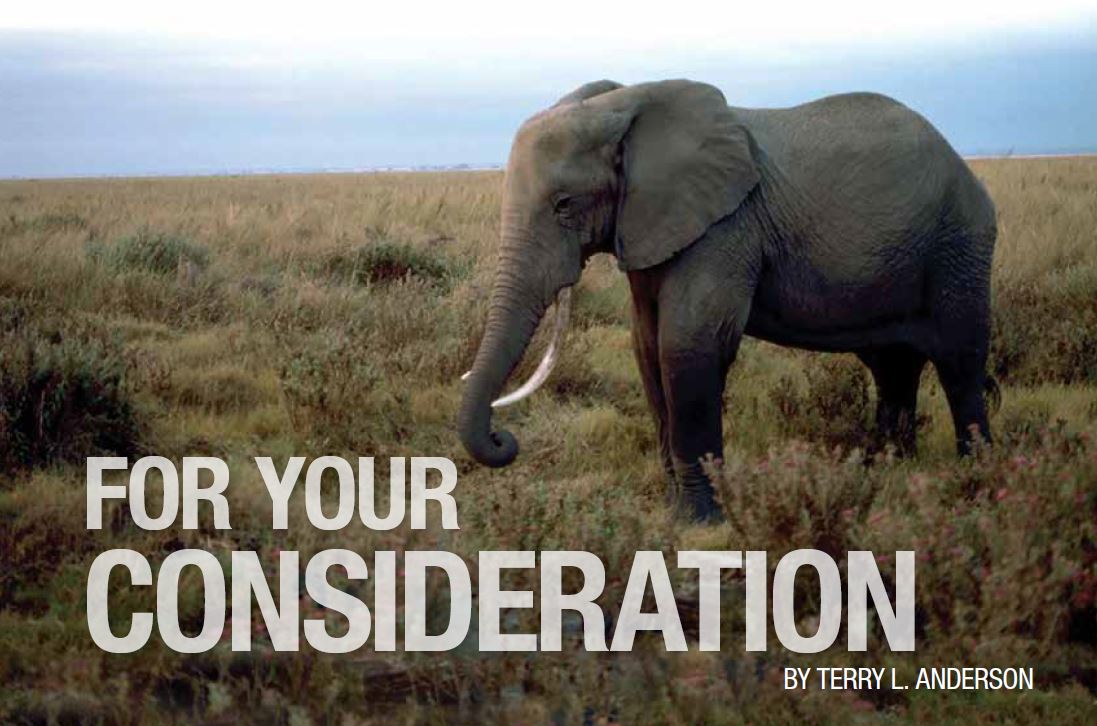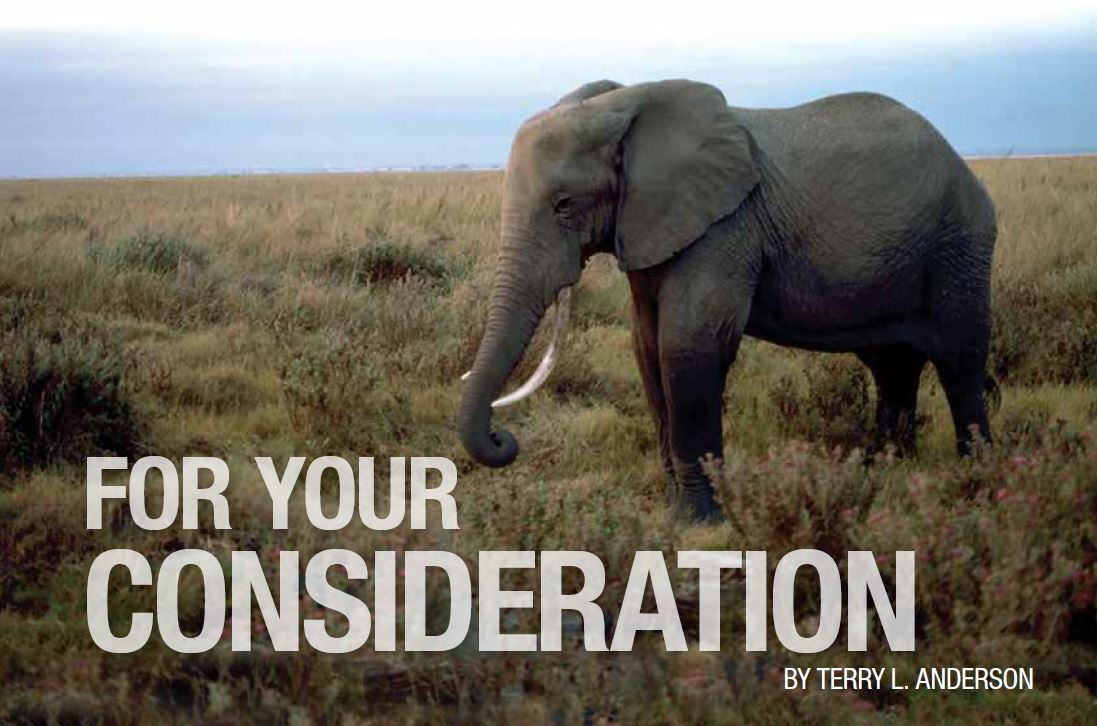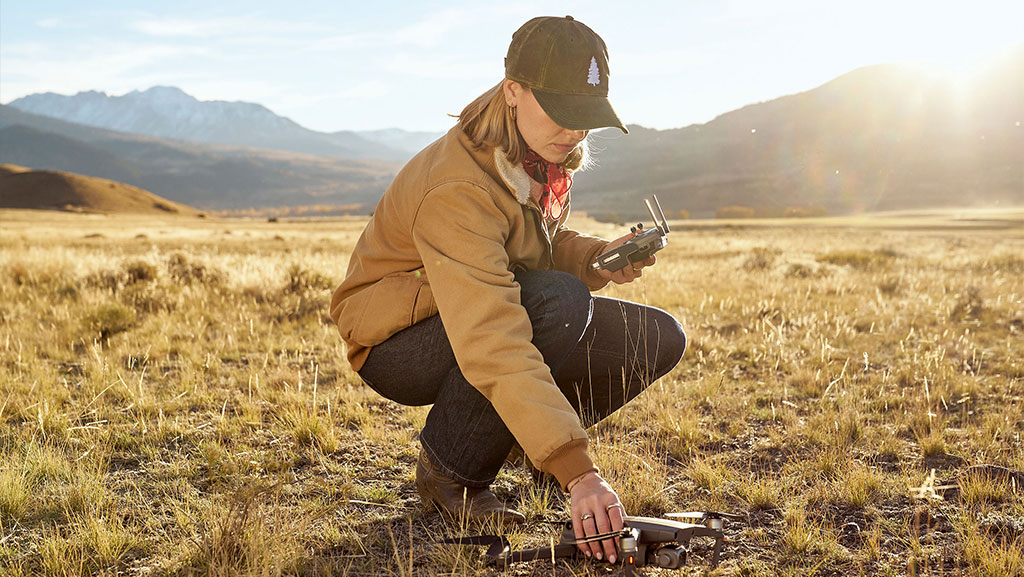Originally appeared in the Spring 2015 issue of Game Trails, the official magazine of the Dallas Safari Club. This featured column is the first in a series called “For Your Consideration” by Terry Anderson.
Kenya banned hunting completely in 1977. The result of the ban is no better illustrated than on Galana Ranch, a property almost as large as Yellowstone Park. The Galana story is one that should be in every hunter’s arsenal for responding to anti-hunters because it illustrates what hunting can do for wildlife and what happens when hunting is banned. (Details of this story can be found in Galana: Elephants, Game Domestication, and Cattle on a Kenya Ranch.) Leaving emotion aside, hunter-conservationists must continue to provide evidence not rhetoric – something that antihunting zealots rarely do. Through examples such as Galana, hunters can drive home the message that hunting is sustainable conservation.
We pick up the story of Galana Ranch in 1960 when Martin Anderson ventured to the Dark Continent on his first hunt. He was lured to Africa by the sights and sounds familiar to all who have read Hemingway or Ruark, but his hunting passion quickly was directed to wildlife conservation.
In 1960, Kenyan wildlife was abundant and its politics were turbulent. The Mau Mau Rebellion signaled the end of colonial rule, leading most colonialists to ask one another, “Have you sold your land yet?” As a retired Marine, lawyer, and entrepreneur, however, Marty saw Kenya’ s challenges as an opportunity.
Having whetted his appetite by investing in a 1,500-acre farm, Marty took a giant leap into sustainable wildlife conservation when he bid on and won a 46-year lease on the 1.6 million acre Galana Ranch on the border with Tsavo East National Park.
As an astute businessman, financing the $100,000 winning bid and finding local management partners was not a problem, but conservation questions nagged Marty. “Was developing this virgin land the right thing to do? Would we destroy it for the elephant and the Waliangulu [bushmen]?” Ultimately, the prospect of conserving the land, the wildlife, and the native way of life trumped his concerns.
Marty and his partners developed pipelines, water points, roads, airstrips, and lodges, all of which contributed to the financial and conservation bottom lines. They generated revenues from 16,000 cattle and from hunting every species from the big five to the smallest duikers. Wherever possible they employed native Kenyans in their cattle and wildlife operations.
One of the first management challenges on Galana was to find a way to reduce elephant hunting by Waliangulu bushmen. Although they hunted only with poison-tipped arrows launched from wooden longbows with 100 pound draw weights and only for meat (not ivory), the Waliangulu were so proficient that they were decimating the Dabassa elephant herd, which roamed Galana and Tsavo East. Marty reported that one search “between the Galana and Tana Rivers, discovered the carcasses of about 900 elephants” including “352 tusks, weighting more than 6,500 pounds.” Rather than trying to force them to stop killing elephants, Marty incorporated the Waliangulu into his elephant management program, allowing them to cull elephants on a sustained yield basis.
For 10 years, Galana made profits from safari hunting based on sound conservation principles. Marty’s success gives meaning to the old rancher adage, “If it pays, it stays.”
Unfortunately…
The full article is available in the Spring 2015 issue of Game Trails, the official magazine of the Dallas Safari Club. A PDF is here.




